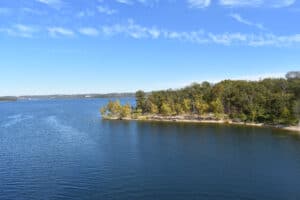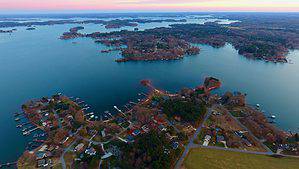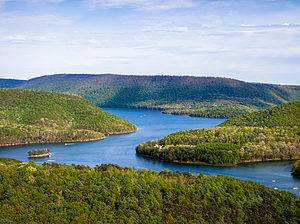Lake Winnisquam may not receive as much attention as nearby Lake Winnipesaukee, but it’s well worth exploring in its own right. This New Hampshire gem is a popular spot for vacationers looking to fish, boat, hike, and swim. It even has a state park on its eastern shore dedicated to preserving the area’s natural beauty. Its small size means it’s fairly easy to explore. So just how wide is Lake Winnisquam? Read on to find out its width, length, area, and how long it takes to swim across.
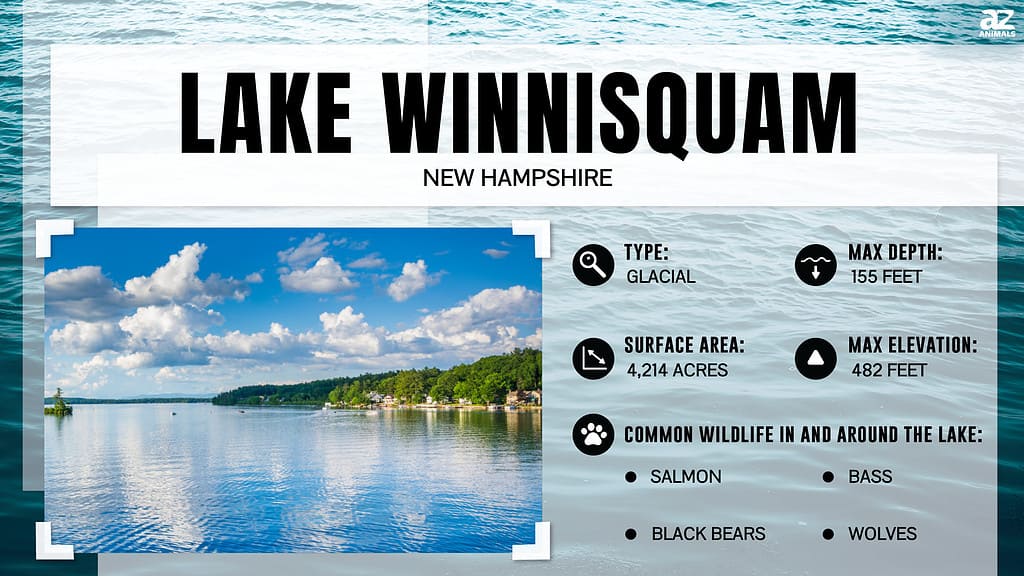
How Wide Is Lake Winnisquam?
Lake Winnisquam is approximately 1.5 miles (2.4 kilometers) wide at its widest point. It is the fourth-largest lake contained completely within the state of New Hampshire. It forms an approximate triangle with its points situated north, east, and south. Routes 3 and 11 cross the lake via the Winnisquam Bridge, which separates the bigger northern basin from the much smaller southern one.
The table below lists a number of other measurements for Lake Winnisquam:
| Measurement Type | Size |
|---|---|
| Area | 4,214 acres (6.5 square miles) |
| Length | 10.5 miles |
| Maximum Depth | 155 feet |
| Average Depth | 52 feet |
| Volume | 69 billion gallons |
| Height Above Sea Level | 482 feet |
Where Is Lake Winnisquam in New Hampshire?
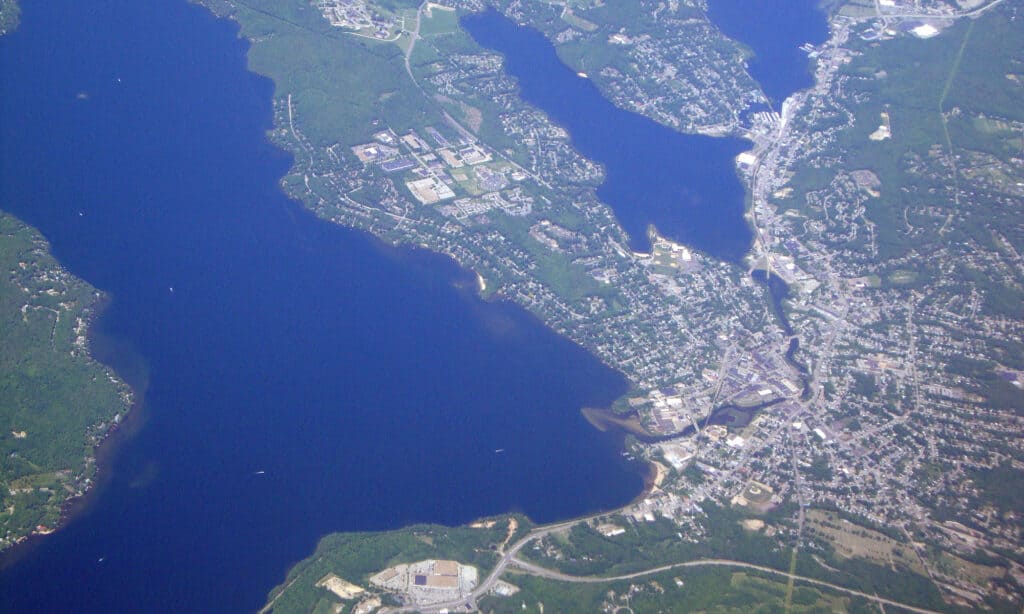
Lake Winnisquam is the fourth-largest lake entirely contained within New Hampshire
©iStock.com/Eric Broder Van Dyke
Lake Winnisquam lies within Belknap County in New Hampshire’s central Lakes Region. Lying to the north and east, Lake Winnipesaukee is its primary source. The Winnipesaukee River flows from Lake Winnipesaukee into Lake Winnisquam via the latter’s eastern corner. It then exits from its southern point, flowing toward the Merrimack River.
Five communities lie on the shores of Lake Winnisquam: Meredith, Laconia, Sanbornton, Belmont, and Tilton. The lake also has five islands: Loon Island, Three Islands, Pot Island, Hog Island, and Mohawk Island.
How Long Would It Take to Swim Across Lake Winnisquam?
It takes approximately 45 minutes to swim across Lake Winnisquam at its widest point. This is based on the fact that the average person swims at a speed of about two miles per hour. It also assumes that the swimmer will not slow down, swim off-course, or need a break.
Is Lake Winnisquam Safe to Swim In?
Lake Winnisquam is safe for swimming and makes a popular vacation destination. This is largely due to its sandy beaches, which are accessible from places like Bartlett Beach and Ahern State Park. Strong swimmers or those with boats are free to explore the lake’s five islands. Other ways to enjoy Lake Winnisquam and the surrounding area include hiking, rail biking, and golfing.
What Lives in Lake Winnisquam?
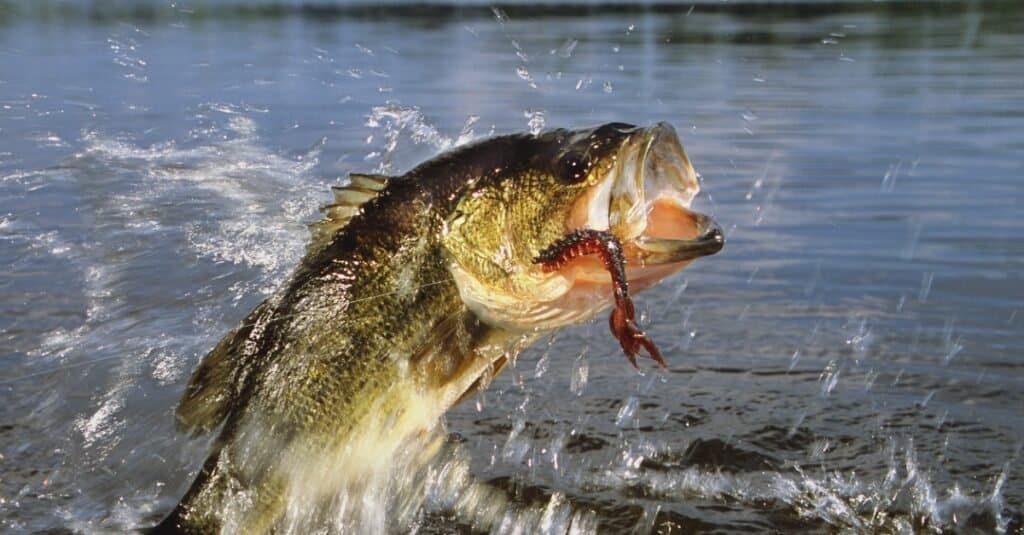
Lake Winnisquam is home to numerous species of fish, including largemouth bass.
©iStock.com/stammphoto
Lake Winnisquam contains many species of both coldwater and warmwater fish. Coldwater species include landlocked salmon, whitefish, rainbow trout, brown trout, brook trout, and lake trout. Warmwater species are more numerous and include chain pickerel, yellow and white perch, walleye, northern pike, horned pout, smallmouth bass, largemouth bass, rock bass, black crappie, sunfish, and bluegill. Most species sustain themselves naturally through reproduction, though authorities replenish stocks of landlocked salmon and rainbow trout as needed.
Besides fish, New Hampshire is home to a rich variety of wildlife including birds, small and large mammals, reptiles, amphibians, and insects. Its largest mammals include black bears, moose, white-tailed deer, wolves, and coyotes. Provided visitors keep a safe distance from wild animals, Ahern State Park is a great place to explore the lake’s diverse wildlife. It covers 128 acres with 3,500 feet of shoreline. For those hoping to bring their canine companions, the park permits pets on the trails but not on the beach.
Is Lake Winnisquam Polluted?
While pollution is present to some degree in all bodies of water, the water in Lake Winnisquam is generally considered high quality. Water clarity is good and levels of phosphorus and dissolved organic matter are low. However, there is some concern that pollution levels will worsen over time, partly due to increased urbanization.
How Does Lake Winnisquam Compare to Other Well-Known American Lakes?
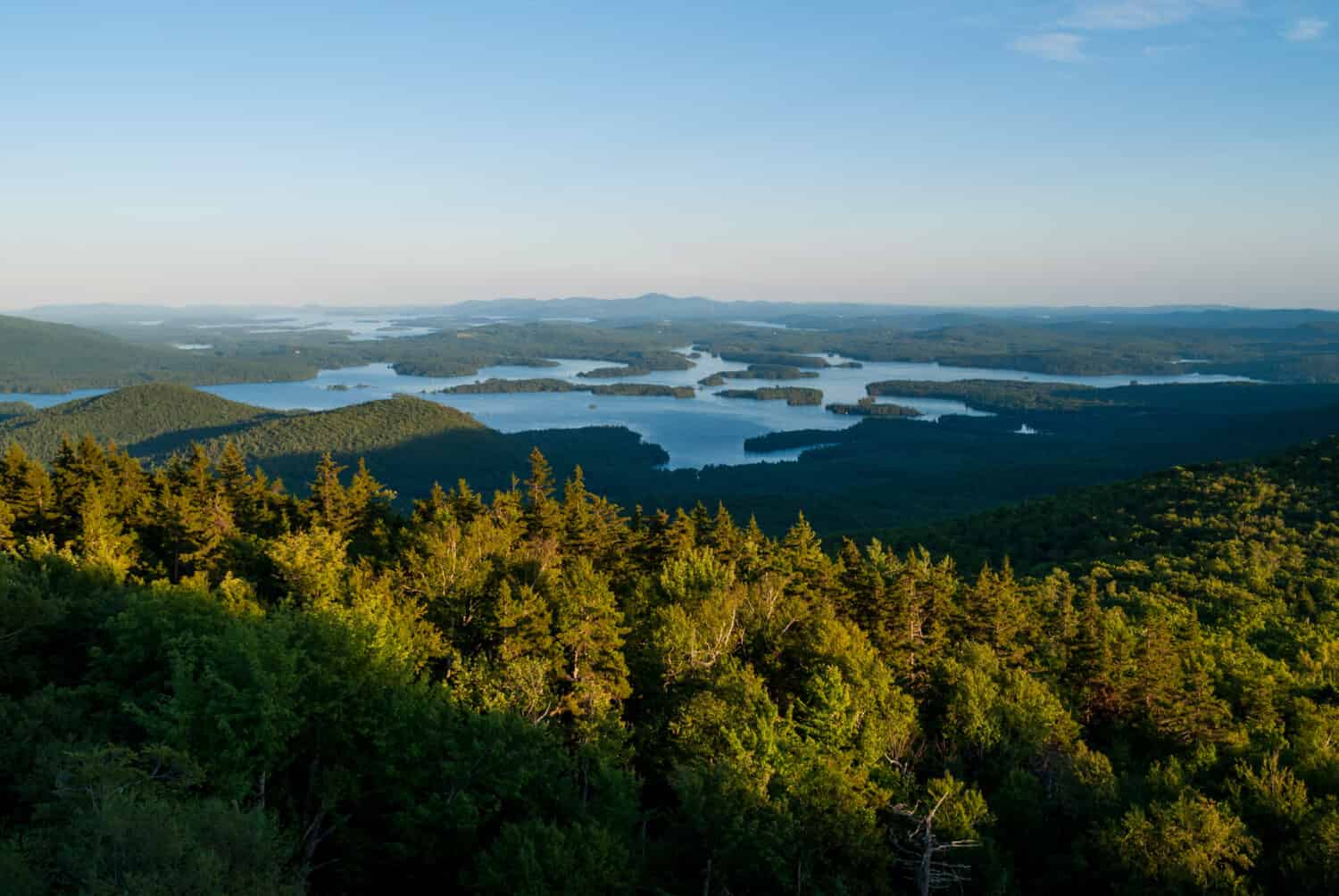
Lake Winnisquam sits within the Lakes Region of New Hampshire.
©Christopher Georgia/Shutterstock.com
Below is a table comparing the width of Lake Winnisquam to the widths of several other well-known or sizeable American lakes. All measurements are in miles and indicate the widths of the lakes at their widest points.
| Lake Name | Width |
|---|---|
| Lake Winnisquam | 1.5 miles |
| Lake Huron | 183 miles |
| Lake Superior | 160 miles |
| Lake Michigan | 118 miles |
| Lake of the Woods | 59 miles |
| Lake Erie | 57 miles |
| Lake Ontario | 53 miles |
| Great Salt Lake | 28-35 miles *This lake’s size fluctuates considerably due to a number of factors |
| Flathead Lake | 15.5 miles |
| Yellowstone Lake | 14 miles |
| Lake Tahoe | 12 miles |
| Lake Winnipesaukee | 9 miles |
| Crater Lake | 5 miles |
History of Lake Winnisquam
The Algonquian-speaking Indigenous Abenaki people lived around Lake Winnisquam until the 18th century. After colonists came to the area by boat, they claimed the land and settled there. In 1840, the colonists named the county after Congregational clergyman and historian Jeremy Belknap. The lake was divided into two separate basins, an arrangement which continues to this day. The name Winnisquam possibly means “pleasant waters.”
The photo featured at the top of this post is © Jon Bilous/Shutterstock.com
Thank you for reading! Have some feedback for us? Contact the AZ Animals editorial team.




